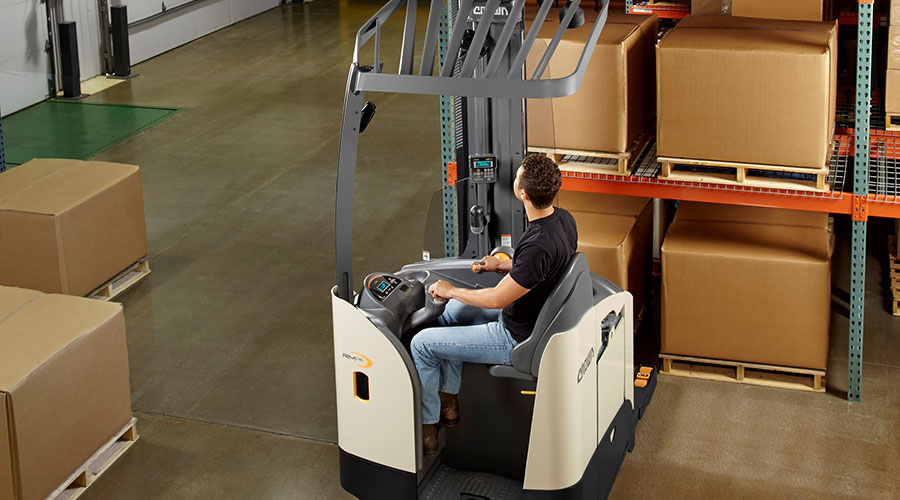The Impact of Forklift Design on Safety Management

Crown Equipment is committed to helping customers maintain a safe operation with equipment designed around the operator, in accordance with industry standards. A successful safety program considers key elements that can positively contribute to employee safety. In this forklift safety blog series, with topics inspired by our new e-book “An Integrated Approach to Forklift Safety,” we explore the components of an integrated safety approach and how to ensure a strong safety culture.
A key element of a safety management program is the equipment used in the warehouse or on the jobsite. It is instructive to understand how forklift design has evolved in terms of safety.
In the U.S., forklifts must comply with ANSI/Industrial Truck Standards Development Foundation (ITSDF) standards and meet the requirements of OSHA 29 CFR Section 1910.178. Other countries have similar standards and regulations. These standards and regulations provide a threshold for forklift safety; however, some manufacturers have gone beyond simple compliance.
Through the study of issues related to safety from an operator’s perspective and continued evolution of product design, Crown has leveraged technology to help operators maintain focus and reduce the likelihood of errors. The following are some of the key components to consider when evaluating operator and safety-centric forklifts:
- Curbing Operator Fatigue
Ergonomics is the science of designing products so that people can interact safely and efficiently with those objects in the intended environment. With forklifts, that means designing the vehicle around the way operators work rather than forcing operators to adapt their work habits to the vehicle’s design. The more operators have to compensate for poor design, the more they are likely to experience unnecessary fatigue, which can ultimately lead to an increased risk of accidents.
- Enhancing Visibility
Operator sightlines have been enhanced for a variety of products. This can help reduce the risk of accidents otherwise caused by obstructed views.
- Maintaining Focus
Moving to interactive, customizable on-board screen displayshas allowed forklift manufacturers to create a more informative and personalized experience for operators, who have become accustomed to similar technology interactions in their personal lives. Intuitive and easy-to-read menus and configurable widgets enable operators to customize their digital user experience and receive contextual alerts to increase engagement.
- Enhancing Forklift Operation
A variety of intelligent sensors and systems are being integrated into forklifts to help reinforce correct operating practices. Specific control capabilities vary by manufacturer and their ability to use real-time operating data. Crown’s stability, traction and operator position controls can help even the most experienced operators improve their approach to safety.
Product features designed to make forklifts safer provide a solid foundation for safer operations. From reducing fatigue to improving visibility to enhancing stability and performance, today’s forklifts include features that help address many forklift-related safety concerns. While safety is the top priority, forklifts designed to reduce fatigue and enhance visibility also deliver benefits in the areas of productivity and operator satisfaction.
You can read more about the impact of forklift design on safety management, as well as the overall importance of a comprehensive approach to safety in our newest e-book, “An Integrated Approach to Forklift Safety.” In the coming days, we will continue to explore other safety topics, like the role that data and technology play in a safety culture, so please continue to revisit our blog for new content.